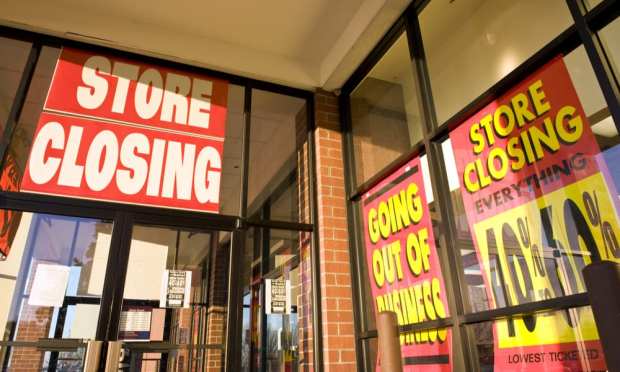Debt Traps – And Bankruptcies – May Spread As A Coronavirus Side Effect

There’s nowhere to hide from the crippling economic effects of the coronavirus.
As companies across all verticals have been forced to shutter, they’ve been unable to keep top-line traction or operations humming – or to service their debt loads.
Welcome to at least one ripple effect of the pandemic that might last long after the vaccines are invented and administered.
Call it the great debt reckoning, where the final chapter may be … Chapter 11.
The Wall Street Journal reports that certain verticals, such as retail and energy, had already been on relatively shaky ground with onerous debt loads before COVID-19 came to the fore. Marquee names in retail are in talks for bankruptcy financing, such as JCPenney, to the tune of $1 billion. Neiman Marcus may file. A number of energy-related firms have already filed for bankruptcy, decimated by record lows in commodity prices (you may recall that oil prices went negative last week).
The data thus far show a few cracks across the debt landscape, presumably before a deluge of Chapter 11 filings. As of mid-April, S&P Global estimated that “selective default” ratings for U.S. corporate debt stood at $64.1 billion and may touch $340 billion, which is a high watermark of the sort that was seen during the financial crisis.
“We will definitely see an uptick in defaults and an uptick in restructurings,” said William “Tuck” Hardie of Houlihan Lokey Inc., according to the Journal. “The question is: Is it a 2,000-foot mountain or is it Mt. Everest?”
There’s been cash to tap, at least in terms of credit, but what happens when the credit tightens? Goldman Sachs has estimated that in the U.S. alone, firms drew down $230 billion from their revolving credit lines in a span of time that stretched from March to April 9, as the coronavirus spurred 44 states to go on lockdown via shelter-in-place orders.
But now debt is being piled on top of debt. S&P Global has estimated, per analysis published this month, that “speculative grade markets have now re-opened, with issuance exceeding $20 billion through this month” – including, for example, $8 billion issued through Ford Motor Co.
Firms with hard assets in place, such as cruise ship operators and airlines, have pledged new debt offerings against their tangible plants, property and equipment. Earlier this month, Carnival Cruise issued a total of $6 billion in debt, backed in part by ships as collateral.
The specter of debt looms over the U.S. economy. Jerry Flum, CEO of CreditRiskMonitor, told PYMNTS last month that bond debt, for public companies alone, stood at 48 percent of the GDP.
“That’s a record,” he told PYMNTS, “and a lot of it is junky corporate debt. The quality of debt has come down over the last several years because the governments of the U.S. and around the world have suppressed interest rates.”
As estimated by the Securities Industry and Financial Markets Association, corporate bonds stood at a record $9.6 trillion heading into 2020, up 20 percent over the past five years.
Investing in future growth may prove onerous as debt needs to be serviced, which in turn means hiring may be dampened.
In the meantime, Fitch Ratings last month raised its 2020 institutional term loan default rate forecast to 5 percent to 6 percent. The previous estimate had been 3 percent.
“This translates to roughly $80 billion of volume, topping the previous high of $78 billion in 2009, and nearly doubling the amount originally anticipated this year,” per the report. Things may not get better, as Fitch expects the default rate to reach 8 percent to 9 percent by the end of 2021, “as many companies succumb to drastically lower revenue (in many cases, zero).”
